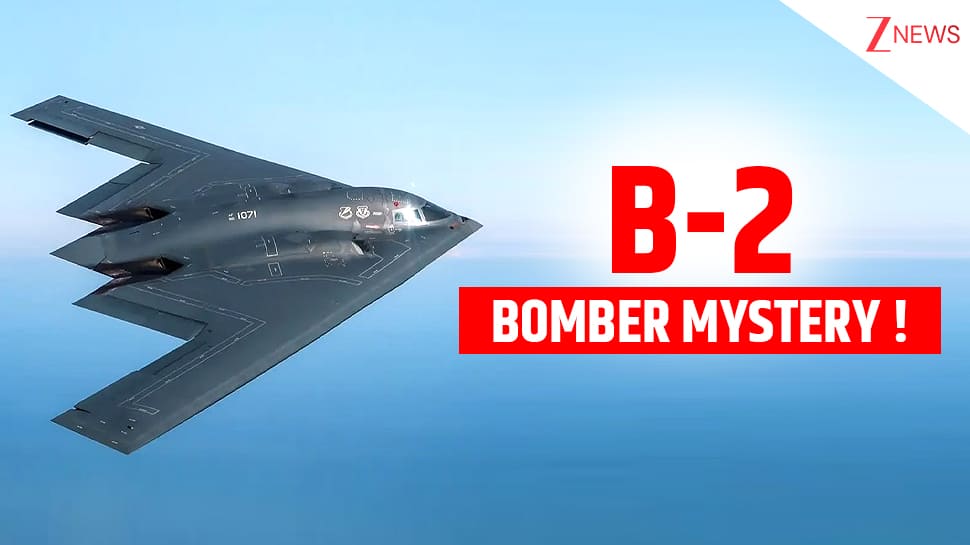Mystery Deepens! Where’s The Stealth? US B-2 Bomber Goes Missing After Iran Operation | World News

The suspense mounts about the whereabouts of a US B-2 Spirit stealth bomber that allegedly has not returned to base after a mission thought to have struck Iranian nuclear facilities. The US Department of Defense offered no definitive word on the location of the aircraft, fueling rampant speculation.
This contradiction is at odds with a Pentagon announcement on June 23 that all US B-2 stealth bombers that took part in “Operation Midnight Hammer,” bombing Iranian nuclear plants, had returned to American soil, touching down near Whiteman Air Force Base in Missouri.
But it has now emerged that the status of at least one of these B-2 bombers remains uncertain. Two sets of B-2 Spirit bombers flew out of Whiteman Air Force Base in Missouri on June 21, according to reports. One group of an unknown number of B-2s flew west across the Pacific Ocean towards an airbase of strategic importance in Guam. Meanwhile, another group of seven B-2 planes flew in a direction east, to bomb Iranian nuclear facilities.
The second wave of seven B-2s successfully attacked Iranian nuclear plants in Fordo and Natanz, dropping 14 GBU-57 MOP bunker buster bombs. The two factories were said to be destroyed in the raid. These planes later flew back home after a non-stop flight period of 37 hours.
Emergency Landing In Hawaii Raises Questions
Little is known about the initial batch of B-2s, whose mission was to disorient Iranian defenses. It has recently come to light that at least one B-2 from this batch had an emergency landing at Daniel K. Inouye International Airport in Honolulu, Hawaii. The airport is situated close to Hickam Air Force Base, and the stealth bomber has been stranded there for some days, according to reports.
When the actual attacks against Iran’s nuclear facilities took place, a number of Iranian social media handles reported that Iran had downed an American plane. The claims were later rejected by then-President Trump and the US Air Force.
Before the attack, on June 21 as the Iran-Israel escalation worsened, news came of a squadron of B-2 combat aircraft flying west out of Whiteman Air Force Base. Reuters reported at the time that the U.S. was to deploy B-2 bombers on Guam, a major US military base in the Pacific that is used mainly as a home base for F-22s, C-17s, and KC-135s, to support U.S. military activities in the Indo-Pacific area.
Flight tracking information showed that a minimum of two individual B-2 Spirit bomber flights, employing call signs MYTEE 11 and MYTEE 21, took off from Whiteman Air Force Base, escorted by aerial refueling tankers. News the next morning emerged that the US bombed Iranian nuclear facilities with B-2 Spirits. It was only realised afterwards that while a group of B-2s flew westward across the Pacific (the decoy operation), another group flew eastward across the Atlantic, actually performing the real mission. Open-source intelligence (OSINT) networks widely covered and tracked the path of the first group without knowing about the secret mission of the second.
Now, there are reports that one of the planes that were headed towards the Pacific has yet to arrive at the destination. Experienced pilot David Martin posted a brief video clip of a B-2 bomber grounded at Honolulu Airport, call sign MYTEE 14. The details about the reason for the emergency landing or the time it will take for repairs are not available.
Air Force Silence Fuels Speculation
As for the B-2 bomber in Hawaii, there was also a report posted on The War Zone (TWZ) website. Charles Hoffman, Air Force Global Strike Command’s Media Operations boss, informed TWZ, “We do not comment on military, aircraft movement, deployment, or posturing.” The US Air Force’s silence about this landing is keeping alive the intensifying mystery: Why did this plane need to make an emergency landing, and why is it still in Hawaii?
Hoffman went on to say, “Air Force Global Strike Command retains the capability to execute global strike operations anywhere, at any time, at the President of the United States’ discretion.” Our forces stand always prepared to operate individually or integrated in entirety with our many allies and partners.”
B-2 bombers are also infamous for needing a lot of maintenance and are reaching the end of their operational lives, with the majority of the USAF B-2 fleet being close to three decades old. The planes are to be replaced by the more modern B-21 Raider stealth bombers. Only 21 B-2 bombers were originally constructed, and only 19 are still in service following two being destroyed in crashes.






